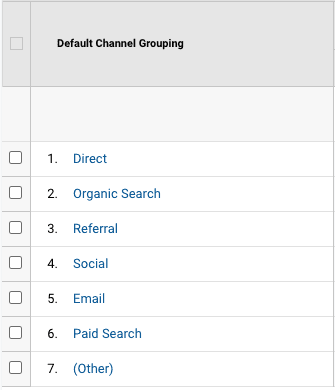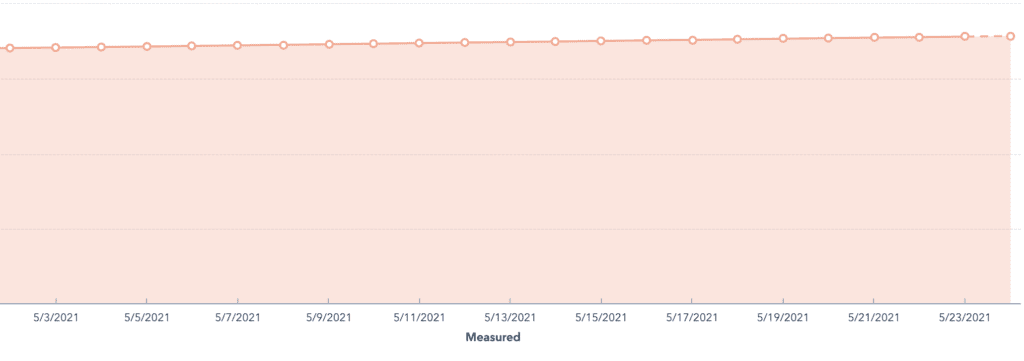Free traffic.
Everybody wants it – but how do you get it? That’s exactly what we reveal in this post, so read on to discover 3 ways to get free traffic for your affiliate marketing business!
If you’re new to affiliate marketing or ecommerce, you probably don’t have the kind of traffic that some veteran marketers have. Traffic – especially free traffic – is a commodity in the affiliate marketing world. Without it, your likelihood of making it as an affiliate is slim!
Of course, as a new affiliate, shelling out mad cash for paid traffic is intimidating, and not always the safest way to get visitors to an offer page. To give you a leg up, we’ve compiled this list of tips and tactics on how to get free traffic.
[hubspot portal=”5154711″ id=”7642b9fe-5d46-49e7-aa54-737c33f9221c” type=”form”]What is Free Traffic?
So, before we dive into different ways to get free traffic, we have to come clean… there’s not really any such thing as “free” traffic. Not exactly!
Thomas McMahon, Senior ClickBank Business Development Manager, explains:
“There’s not going to be a lot of true free traffic anymore. There’s going to have to be some amount of work put in to earn traffic. You might not have to pay money for it, or at least not much money, but it’s going to take some sweat equity to gain a traffic source that you can then leverage to make money.”
Still, there are ways to get free or very cheap traffic online, as long as you’re willing to put in the time and effort to get it.
The 6 Types of Traffic Online
There are several categories of traffic identified in Google Analytics. Whether you intend to have your own website or not, it’s helpful to understand these different traffic channels, so you can decide which ones to focus your efforts on!

As you can see in this Google Analytics screenshot, there are 6 primary traffic channels:
- Direct traffic. Traffic from bookmarks or your URL typed in the browser.
- Organic search traffic. Traffic from unpaid search engine results (primarily Google).
- Referral traffic. Traffic coming from links on other websites.
- Social traffic. Traffic coming from links on social media (both free and paid).
- Email traffic. Traffic coming from links in emails.
- Paid traffic. Traffic coming from paid search ads.
Now, virtually all of these channels can be free except for paid traffic (for obvious reasons), but in practice, you may still choose to pay in order to fully leverage the power of these channels.
While there are several possible sources of free traffic, we want to keep it simple. Here are the 3 best ways to gain free traffic:
Let’s dive into each one!
Traffic Source #1: Blog SEO
Focusing on SEO and blog growth will help you build an organic source of traffic. While generating organic traffic from Google is not as easy as it was ten years ago, it is still doable – but it requires you to focus on a specific niche.
Even then, you’re going to need a website, plus a LOT of time to write blogs. (You can always hire freelance content writers, but the good ones will cost you.)
As you plan for the kind of content you’re going to feature on your website, remember that you’re trying to rank for highly specific long-tail keywords. Niching down will help you rank faster, but how can you pinpoint the kinds of keywords you should target to beat the competition?
We recommend using tools like Ahrefs, SEMRush, KWFinder, and Google Search Console. Of these four, Google Search Console is the only totally free one.
Personally, in my workflow as content manager with ClickBank, I spend most of my time bouncing between Search Console and Ahrefs, which is the most used SEO tool out there (and one of the largest website crawlers, second only to Google).
KWFinder is best for finding long-tail keywords with a lower level of competition. This is a good investment for those who are trying to identify the best niche to gain traction and traffic in.
When it comes down to leveraging the SEO and blog channel for traffic, there are a few priorities to focus on.
Top Tactics:
- Creating new SEO content: Write and publish new content optimized around keywords you’re targeting. More is always better, as long as you can keep up content quality.
- Conducting outreach or link building campaigns: Another free SEO tactic is sending out emails seeking other sites that will link to your overall site or your specific content.
- Updating old SEO content or internal linking: Another excellent free opportunity to grow your site is simply improving what you’ve already published. I use tools like Frase, PageOptimizer Pro, and Surfer SEO to help suggest on-page optimizations. You can also add more internal links to help direct the flow of link equity to your most important pages.
Total Cost: Free, except for the costs to build and host your website, and hiring writers to help, if needed.
Traffic Source #2: Social Media
After you have a website running with a little bit of content, you’ll find that social media is one of the best ways to promote your content and build new connections. Social media is also a quality organic traffic source.
Well… Some might call it “free,” but this is really where the term “sweat equity” comes in. Nobody is entitled to a following on social media; you have to earn it!
Sure, it doesn’t require cash upfront, but building a following on LinkedIn or through a Facebook Group is not an overnight task. It takes trust, good content, and patience as you figure out what resonates with your audience and what doesn’t.
Because there are so many different social networks out there, it’s important for you to narrow in on the right platforms. Here are a few things to keep in mind:
- Your target audience is probably most active on just two or three social media sites. Do your research and figure out whether Facebook, Instagram, Pinterest, LinkedIn, Twitter, Snapchat, TikTok, or another site is the biggest draw for your audience.
- Deliver value before trying to extract it. Unlike with paid ads, social media exists as a place for people to connect and have fun. Most users aren’t looking to be sold to, so you have to provide value in the form of informational or entertaining content before posting anything promotional. (My rule of thumb is 4 posts of value for over 1 promotional post.)
- Social sites don’t like to send people away. Traffic isn’t just important for your business – it’s important for the social media sites as well. As a result, their algorithms don’t tend to show a lot of love for posts that link out to other websites. If you want to succeed on social, you’ll want to play by their rules 80-90% of the time.
There are plenty of resources out there on how to leverage the power of social networking to build a following and get free traffic. Below are some of the tactics we recommend.
Top Tactics:
- Start Your Own Facebook Group: Right now, Facebook Groups are one of the best ways to build a community of engaged fans. Compared to Facebook Fan Pages, you’ll have a much easier time getting your organic posts to reach your users.
- Engage in Other Communities: Social media is a social game. Go out to forums or social communities like Twitter, Reddit, Quora, LinkedIn Groups, Facebook Groups, or YouTube channels and add your two cents to the discussions. As you contribute, you’ll come to be known as an expert over time and people will naturally start to visit your social pages or website to learn more about you. Most importantly, you’re building brand equity!
- Become an Influencer: If you’re in the right space, becoming an influencer is a powerful opportunity for reaching your audience and growing your free traffic. Even better, influencer social accounts can become moneymakers in their own right!
Total Cost: Free, except for any posts where you choose to pay to boost their organic reach.
Traffic Source #3: Email Marketing
It would be a drastic oversight if you didn’t use your new website to collect email addresses from your visitors as soon as it’s up and running. This is the first step to building an email list and “earning” free traffic for your promotions.
The rule of thumb in this industry is that each email address on your list is worth $1 per month, so an email list of 10,000 would equate to $10,000 per month! Like the blog, email is also a marketing channel that you own and control.
One of the best ways you can collect email addresses is through gated content or a subscribe function. Here’s how it’s done.
Gated Content
Gated content is any valuable content (like an e-book, a guide, cheat sheet, etc.) that is accessible “behind” a form that requires a visitor’s email address to access. If you’re working with a landing page builder like HubSpot, building the functionality behind gated content is relatively easy. Once a visitor gives you their email address, you can start sending them emails with content and promotions.
But a word to the wise: these emails have to be good. Like, really good. Otherwise, your email list will dwindle as people unsubscribe. “Good” emails are primarily informational and helpful, with occasional promotions sprinkled in.
Subscribe Function
As you add content to your website, you can give visitors the option to subscribe to your email list to stay up to date on your content and promotions.
This is similar to gated content, but you’re not incentivizing visitors with any particular piece of content, just your overall content goodness in general. This tactic can be more difficult – however, these users aren’t as likely to unsubscribe after they receive their initial deal, which means you’re building a more engaged list of subscribers.
Top Tactics:
- Create gated content to encourage more opt-ins. Get to know what your audience is interested in and create lead magnets that they can access with
- Build your email list by growing other traffic sources. Once you have high-performing lead magnets that convert well, you just need to get more traffic to your opt-in pages. That’s where free channels like SEO, YouTube, and social media come into play.
- Find affiliate offers to promote. The endgame for email marketing is to monetize your list. Ultimately, the quest for “free traffic” can end if you make enough from your emails to reinvest in these sources or paid traffic channels.
Total Cost: Free, except for the monthly subscription you may spend on a paid email service provider.
The Difference Between Paid Traffic and Free Traffic
Now that we’ve looked at these free traffic opportunities, we need to touch on their paid counterpart.
So, what is paid traffic?
In a nutshell, paid traffic refers to any advertising source that requires money to generate traffic. Here are some of the most common:
- PPC social ads like Facebook Ads
- Display ads like Google Display Network
- Native ads and sponsored posts like Outbrain or Taboola
- Influencer marketing like Instagram stories or posts
The common denominator here is that you have to pay to get traffic through these methods. They’re not guaranteed to work, but you’re likely to see results a lot faster than through free traffic methods.
How to Get Free Traffic Wrap-up
Ultimately, what it boils down to is this: if you don’t want to pay for traffic, the “free traffic” you get is paid for with hard work, trial and error, and time… more time than you probably expect.
But that doesn’t mean all sources of free traffic are created equal. According to Thomas, the email list is what you should always be focusing on.

“If you’re trying to grow organically on your blog or on the social channel, and you’re driving that traffic somewhere to an email list that you’re cultivating, you’re protecting that traffic source and harvesting that for something you can continue to monetize and grow wherever you might go.”
He continues, “If you do spin up a new traffic channel eventually, whether it’s another social platform or a new product or a website you’re launching, you have an email list you can now put that in front of and get that much faster traction than you ever did to start with.”
If you use SEO and blog growth and social networking to grow your email list, you’ll create a stable and reliable source of traffic that is a product of your hard work. The age-old saying is unfortunate, but especially true in affiliate marketing:
Nothing in this world is free… Not even traffic!
Do you want to ignite your digital marketing career? We recommend Spark, the only ClickBank-endorsed education platform. Spark has over 70 videos that harness the power of ClickBank’s two decades of expertise and is the best way to shorten the time between now and your first ClickBank paycheck.







